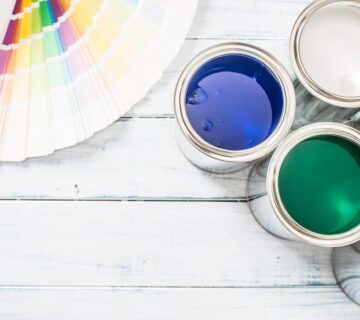Painting your house can be a significant investment, and the costs can vary widely based on several factors. Whether you’re planning to refresh the interior, spruce up the exterior, or both, understanding what influences the cost can help you budget more effectively and make informed decisions. This blog explores the key factors that impact the cost of house painting and how they contribute to the overall price of your project. From the size and scope of the project to the quality of paint and labor costs, each element plays a crucial role in determining the final expense of your painting endeavor.
Size and Scope of the Project
The size and scope of the project are among the most significant determinants of the cost. Factors like the number of rooms, the size of the rooms, and the height of the ceilings play a significant role in estimating the amount of paint and labor needed. Larger rooms or homes with high ceilings will require more paint and labor, increasing the overall cost of the project. Additionally, for exterior painting, the size and type of the home, including the number of stories, will directly impact the price. Considering these aspects ensures a more accurate estimation of the project’s cost and allows for better budget planning.
Quality and Type of Paint
The quality and type of paint used in your project can also have a substantial impact on the cost. High-quality paints with specialty finishes, like satin or semi-gloss, and additional features, such as mold resistance or eco-friendliness, tend to be more expensive. However, they often offer better coverage, durability, and longevity, which can be cost-effective in the long term. It’s essential to consider the long-term benefits of investing in quality paint, as it can save you money on maintenance and repainting in the future. Moreover, the choice of paint can affect the overall aesthetic and value of your home.
Prep Work Required
Preparation work is another factor that can significantly affect the overall cost of house painting. This may include cleaning the surfaces, patching holes, sanding, caulking, and priming. The extent of prep work required depends on the condition of your walls or exterior surfaces. More extensive prep work will increase labor time and costs. However, investing in thorough preparation ensures better adhesion and a smoother finish, ultimately enhancing the quality and longevity of the paint job.
Labor Costs
Labor costs are a substantial portion of the total cost, particularly if you hire professional painters. Rates can vary based on the complexity of the job, the painters’ experience, and your geographic location. Some painters charge by the hour, while others provide a flat rate based on the project’s scope. It’s essential to obtain multiple quotes from reputable painters and consider factors like experience, reputation, and quality of workmanship when making your decision. Additionally, scheduling flexibility and clear communication are key elements to ensure a smooth and satisfactory painting process.
Additional Features and Complexity
In addition to the basic factors, other features and complexities can impact the cost of house painting. Architectural details like crown molding, wainscoting, multiple colors, or intricate designs require more time and skill to paint, which can increase the overall cost. Similarly, exterior features like multiple stories, shutters, and trim work can add to the complexity and price of the job. It’s essential to discuss these details with your painter and factor them into your budget to avoid surprises during the project.
Season and Timing
Lastly, the timing of your painting project can affect the overall cost. Demand for painting services typically increases in the warmer months, which can drive up prices. Scheduling your project during the off-season might result in lower costs, but consider the potential impact on the quality of exterior painting due to weather conditions. It’s essential to strike a balance between cost and quality by planning your project during the optimal time of year for your region. Additionally, scheduling your project well in advance can help secure a slot with your preferred painting contractor and avoid last-minute rush fees or availability issues.
Location
Geographic location plays a role in cost variation, as painting services in urban or high-cost-of-living areas tend to be more expensive compared to rural or lower-cost areas. This is due to variations in labor costs, operational expenses, and the cost of living. Factors such as higher rents for commercial spaces, increased transportation costs, and higher wages for workers contribute to the overall higher cost of services in urban areas. Additionally, competition among painting companies may drive prices up in densely populated regions where demand is high.
Final Thoughts
Ultimately, several factors influence the cost of house painting, including the size and scope of the project, the quality and type of paint, the amount of prep work required, labor costs, additional features and complexity, season and timing, and geographic location. Understanding these factors can help you better estimate the costs and prepare your budget for your house painting project. By considering these factors and working closely with your painting contractor, you can achieve the desired results within your budget and timeline. For more insights into house painting, visit our website at sisupainting.com and explore our blog at sisupainting.com/blog.





No comment